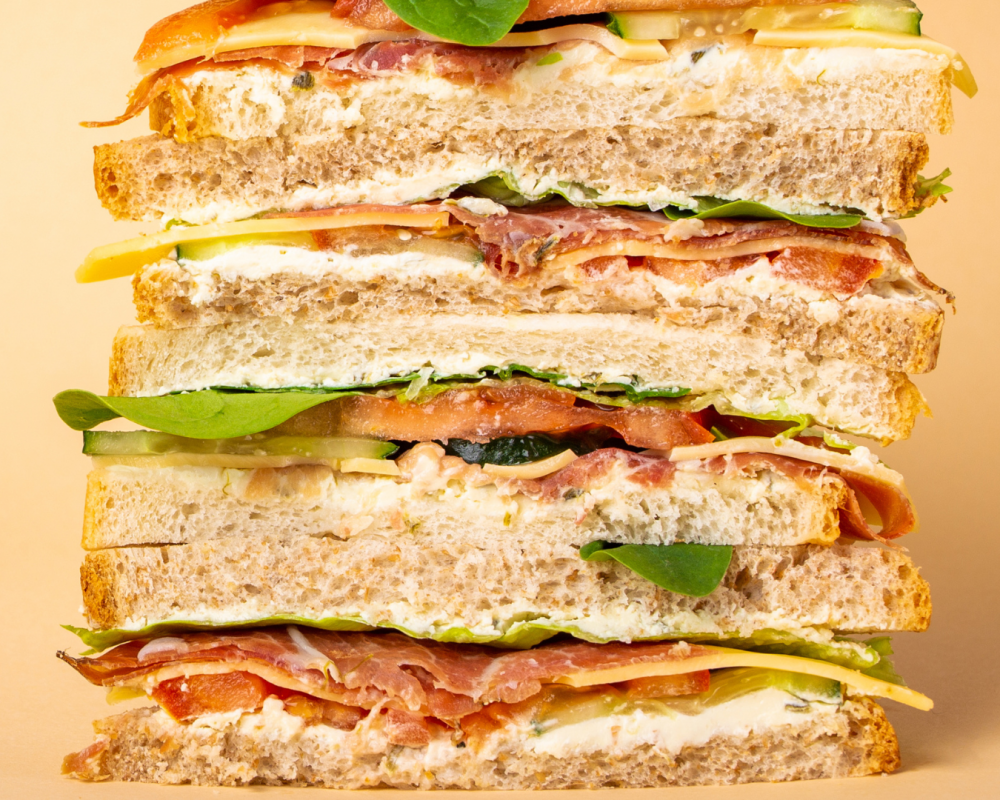But a tall, proud, sturdy sandwich requires planning, knife skills, moisture mitigation, and more. How to prevent wet tomatoes from sogging the bread? How to prevent sliced meats from compacting? How to keep jalapeño rings tucked in place?
Milk Street’s Matt Card has all of the answers. Read on for more, and watch him break it down (or, build it up) on Instagram.
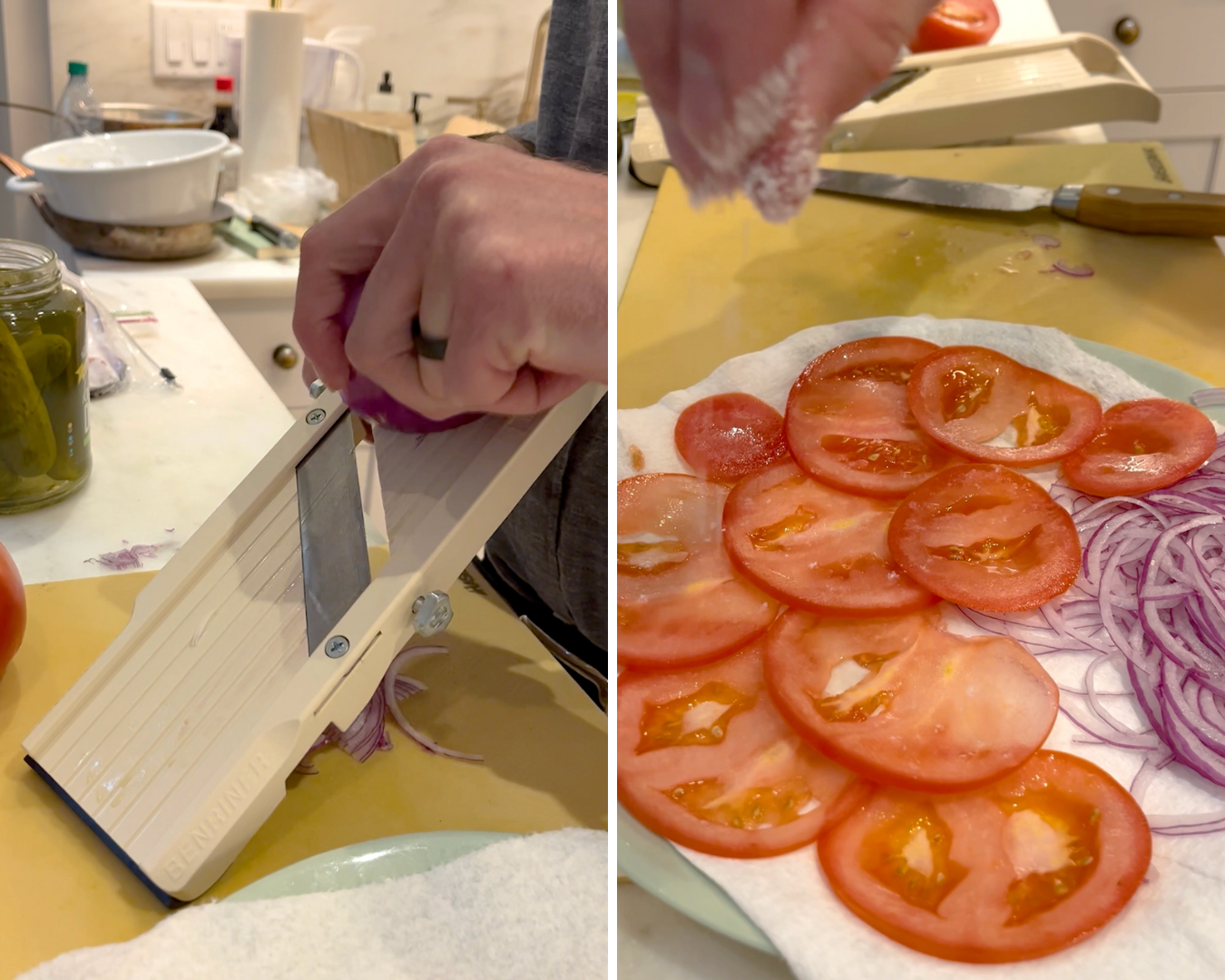
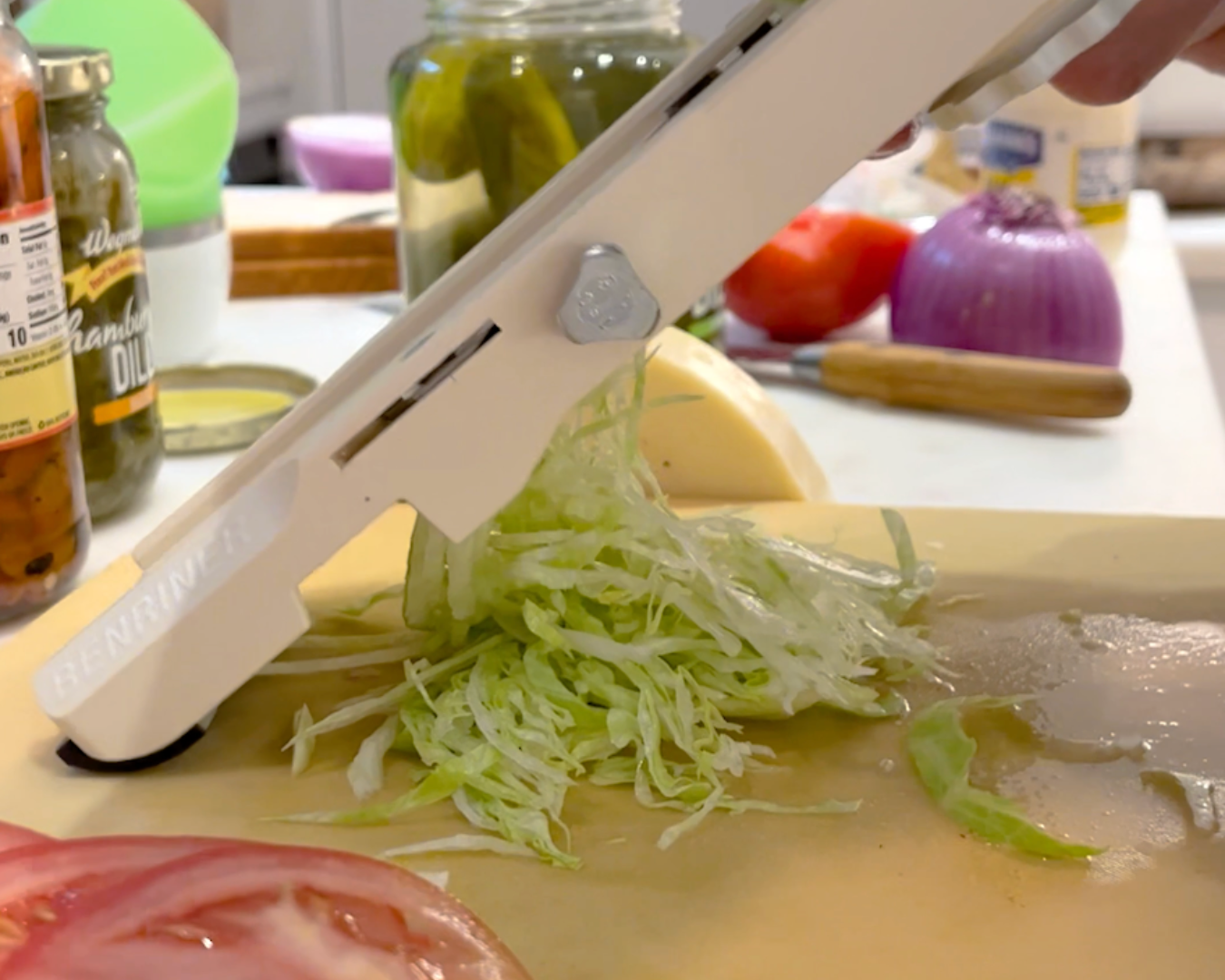
Step 1: Think thin
Ever notice that delis slice their meats super-thin—ham slices that are almost transparent, for instance? This is purposeful. A structurally sound sandwich relies on interlocking components. Think about piling a tangle of ramen, versus large rigatoni noodles. Large components will slide apart; thin components will entwine together.
So needless to say, keep that in mind at the deli counter. If you have a mandoline slicer, pull that out.
Step 2: Slice, Then Salt Your Veggies!
It goes without saying that no Dagwood is complete without raw onions and tomatoes. But each poses a problem.
Whether you’re using red or sweet white, the acrid bite of an onion threatens to overpower the other flavors. And tomatoes are, as Milk Street’s cooking school director Rosie Gill likes to say, “water balloon” produce. If you don’t extract the excess liquid, your bread will turn to mush.
The remedy to both of these problems is salt.
Salt causes produce to “sweat,” drawing out a surprising volume of moisture. This solves the tomato problem, and helps intensify their natural umami flavor. It not only softens the onions, but it also breaks down some of the sulfur compounds which cause the harsh bite.
First, thinly slice your onions with a mandoline (carefully), and thinly slice your tomatoes with a sharp serrated knife. Place both heaps of slices on towel-lined plate, and add more salt than seems necessary. (You will wash the salt off later, and it’ll add more flavor.)
And to prevent the dreaded tearing of whole leaves, don’t forget to shave your lettuce! Feathery-thin shredded lettuce acts as a sort of box stuffing- it holds everything in place.
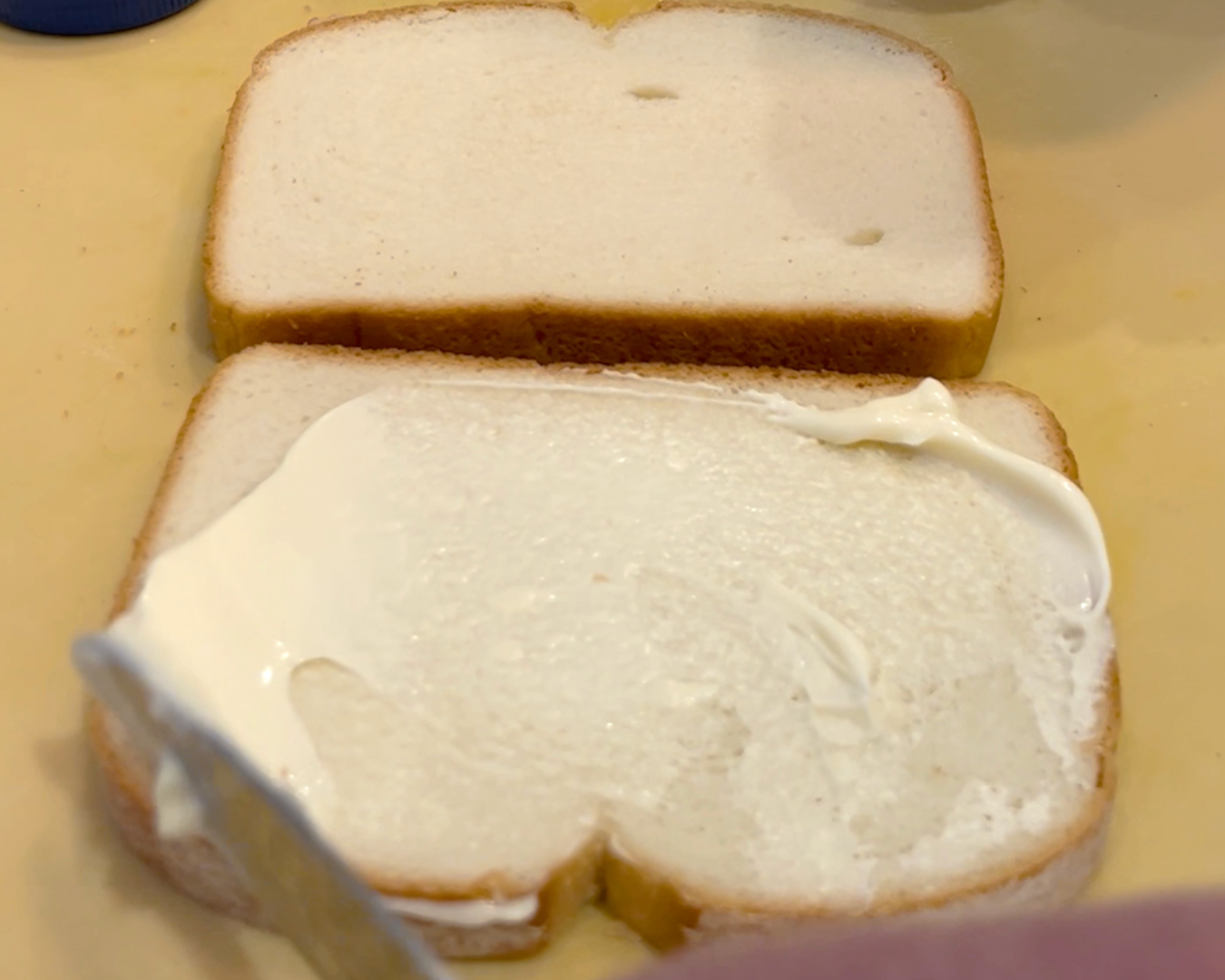
Step 3: A Better Sandwich Starts with the Bread
To build a sandwich with strong structural integrity, you need a good foundation. Thick-cut breads are best for ensuring a sandwich that doesn’t fall apart.
Once you’ve picked the proper bread, you’ll need an extra layer of security. In this case, mayonnaise. Not only does quality mayo add richness to the sandwich, it also acts as a barrier between the other ingredients and the bread. Mustard, another sandwich essential, is water-based, so be sure to add it to the top piece of bread rather than the bottom.
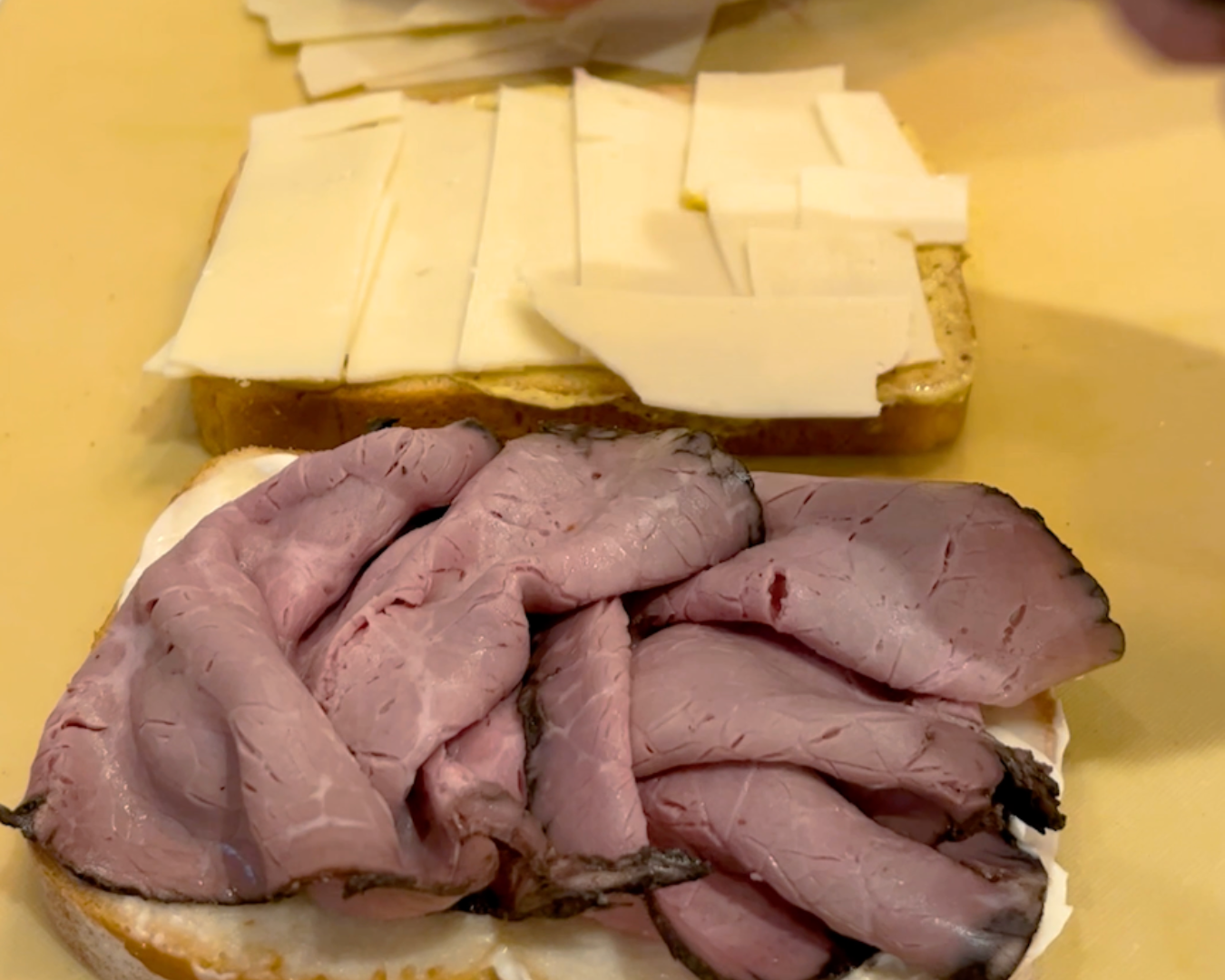
Step 4: Start Building!
It’s time to build that Dagwood!
Using the mayo-protected slice of bread as your foundation, layer your cold cuts in undulating waves. More texture gives the slices more grip, and it prevents your meat from compacting into a dense, tough layer.
Next, lay your thin slices of cheese in shingles (similarly, for interlocking structure).
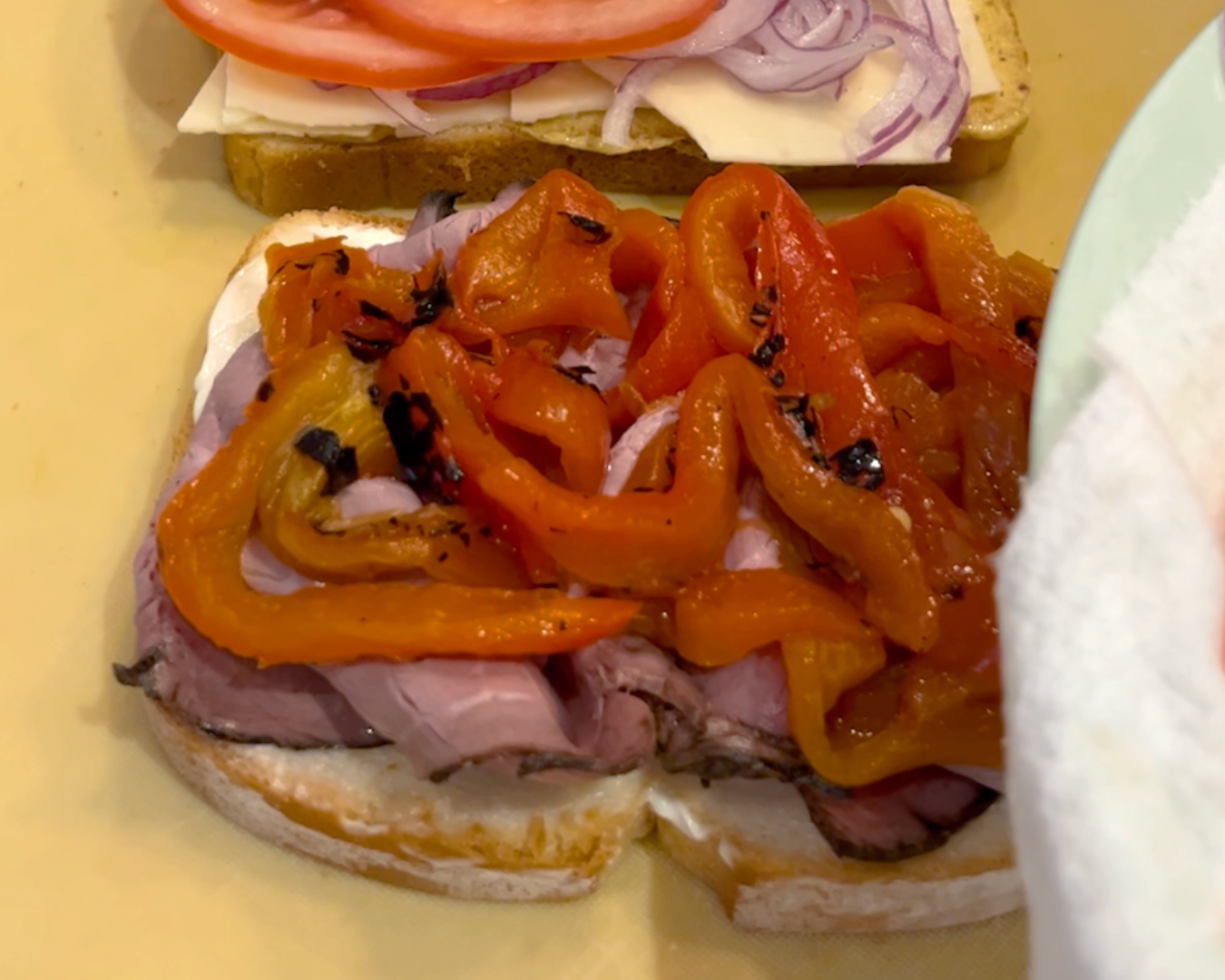
With the bread and cheese done, it’s time to add your wet ingredients. To the side with the cheese and mustard, layer your tomatoes, shaved lettuce and onions. Then, on the side with the mayo and meat, add your “hots” (think: pickled peppers) or your favorite pickles.
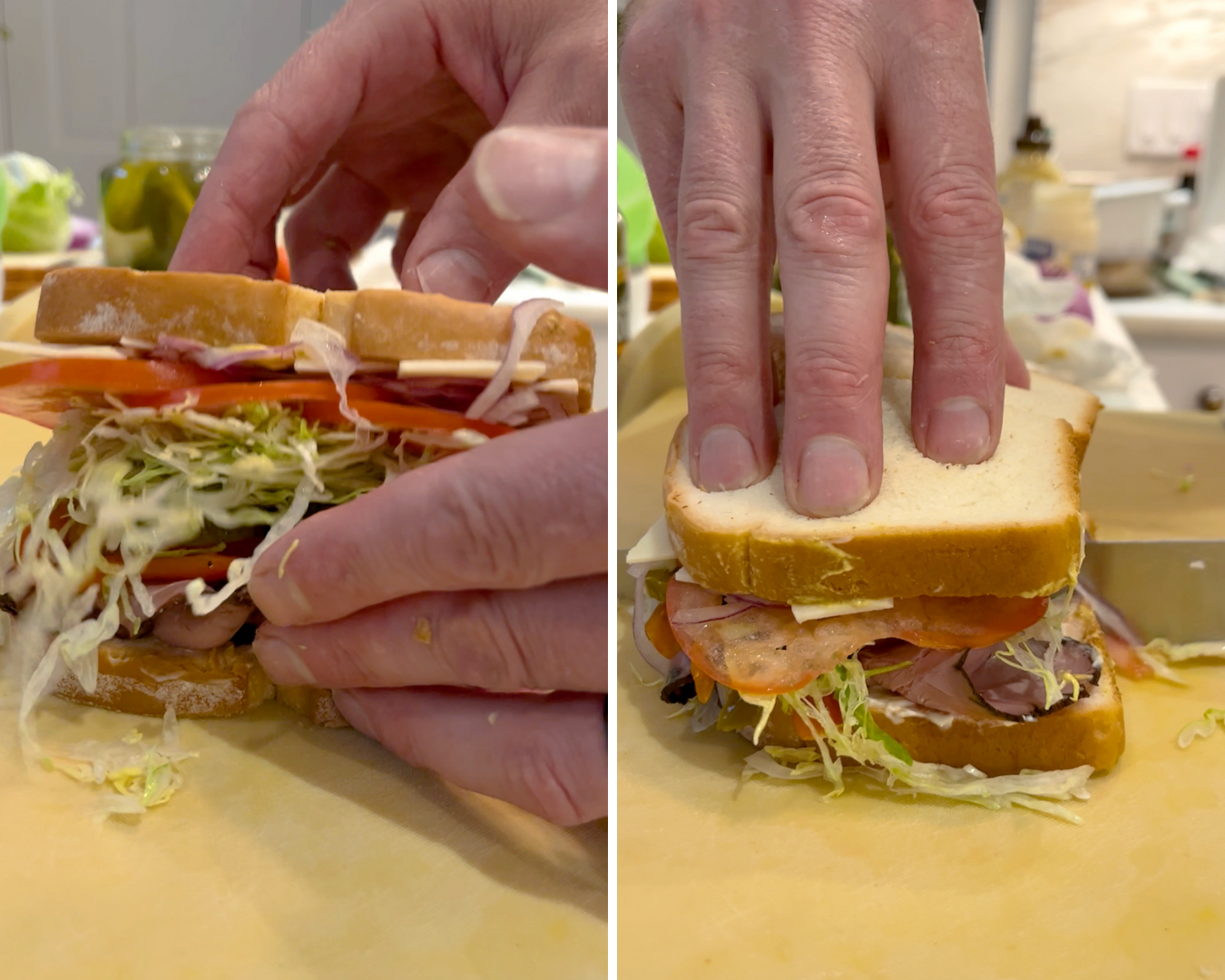
Step 5: Flip and Cut it
Carefully add your top layer to the bottom, gently smoosh together, then cut through with a very sharp knife. That’s it! You’ve finally built the Dagwood of your dreams.
For more Milk Street Sandwich Week content, click here to get the recipes for our show-stopping vegetarian sandwiches; Learn how to batch-bake Croque Monsieurs in the oven; Make Eggplant Katsu and Fried Haloumi sandwiches with Milk Street Cooking School’s Rosie Gill; And reimagine the Bánh Mì Rose Hattabaugh.
Join the conversation on Facebook, Instagram, TikTok and Pinterest.
And if you're looking for more Milk Street, check out our livestream cooking classes with our favorite chefs, home cooks and friends for global recipes, cooking methods and more.
